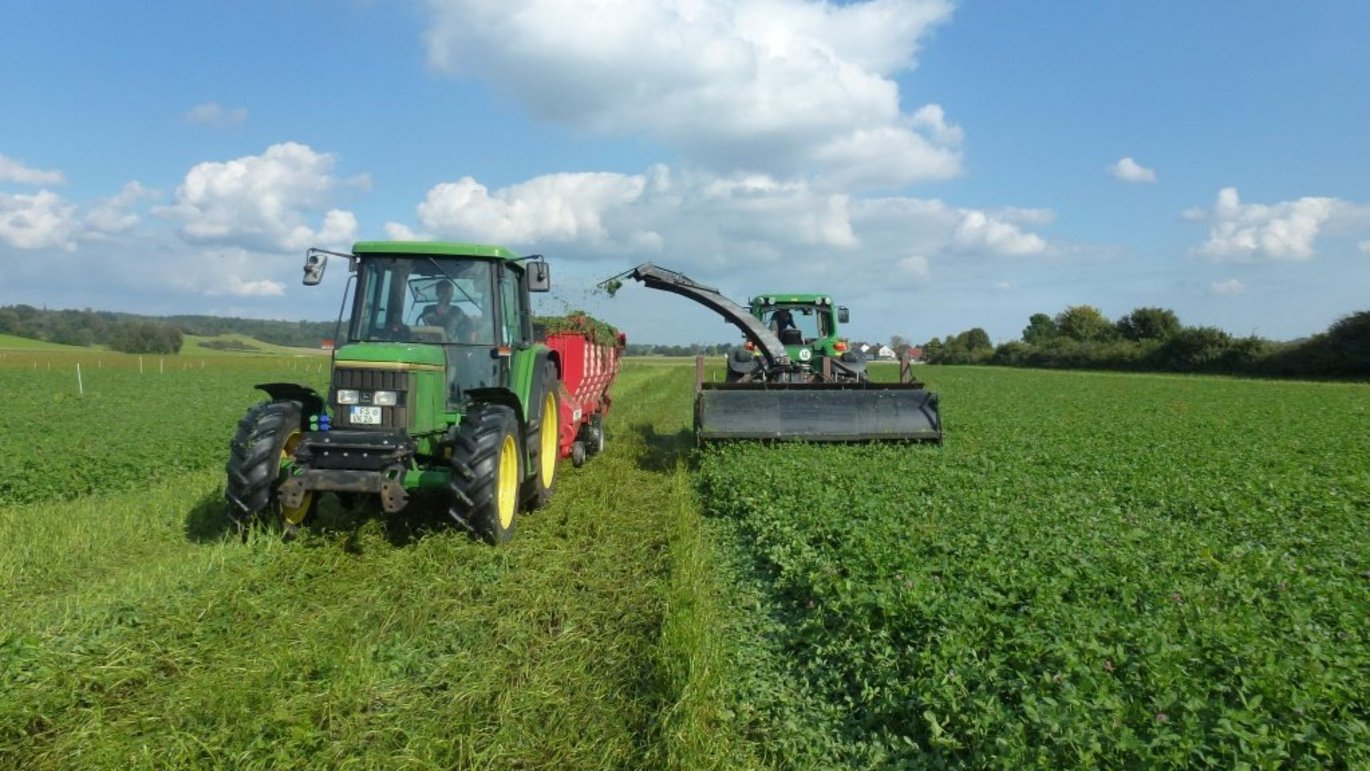How to preserve co-products of fractionated forage legumes for ruminants feeding?
Defoliated stems or squeezed pulp from legumes forages are high in moisture and low in sugars and not likely to be well preserved by ensiling. If soluble sugars or dry feeds are added, silages of optimal quality and good nutritional value can be produced. This was shown in the ProRefine project.





How to relief the dependency of livestock breeding from soybean protein, which is becoming increasingly expensive and also is highly impacting on the environment? The fractionation of legume forage crops by field leaf stripping or biorefining of harvested plants could be a valuable answer, in particular at local level. With these techniques we separate leaves and juices, enriched in proteins and depleted of fibre compared to the original forage plant. These fractions can be valuable sources of protein for pigs and poultry. On the other side, the residual co-products, defoliated stems and pressed pulps, respectively, are relatively low in protein content and high in fibre. Nevertheless, their use as valuable feeds for ruminants becomes a pivotal step for the overall sustainability of the whole chain aimed towards a better targeted use of the forage resources, thus applying a precision feeding strategy. But, how to preserve these high moisture feeds? Ensiling, that seems to be the best preservation technique for such feeds, is based on the natural acidification operated by bacterial fermentations. But such process needs an adequate presence of lactic acid bacteria and a good availability of their preferred substrate, i.e. fermentable sugars. The research carried out within the ProRefine project tested the effect of their enrichment, alone or in combination, with bacterial inocula or with soluble sugars, as well as that of adding dry feeds to decrease the humidity of the materials, as it also affects their stability.
Results
The results obtained confirmed that when the stems and pulp of alfalfa are ensiled without any addition, acetic bacteria prevail. Despite the sharp smell of vinegar, the silage scored “good quality”, remained stable for many days after opening of the silo and were well consumed by animals. The addition of bacterial starters did not improve the conservation status much, but the addition of small doses of molasses (3 – 5 percent of fresh weight) led to much more lactic silages with excellent fermentation quality. The real limiting factor was therefore the lack of sugars, the substrate for lactic acid bacteria development.
Mixing foods such as barley flour or beet pulps with stems and pulps did also improve the fermentation profile and at the same time increase their nutritional value, producing a mix that can form the basis for feeding different categories of ruminants.
These are simple interventions that farmers can adopt giving more value to these feeds in animal nutrition, contributing to the whole sustainability of these new and interesting approaches to a local self-production of proteins from highly sustainable crops that even improve soil fertility.
Author
Paolo Bani, Università Cattolica del Sacro Cuore, Department of Animal Science, Food and Nutrition DiANA), Piacenza, Italy. paolo.bani@unicatt.it / https://dipartimenti.unicatt.it/diana-home
Editor: Karin Ullven, EPOK / Design: Christine Dilling, ICROFS
